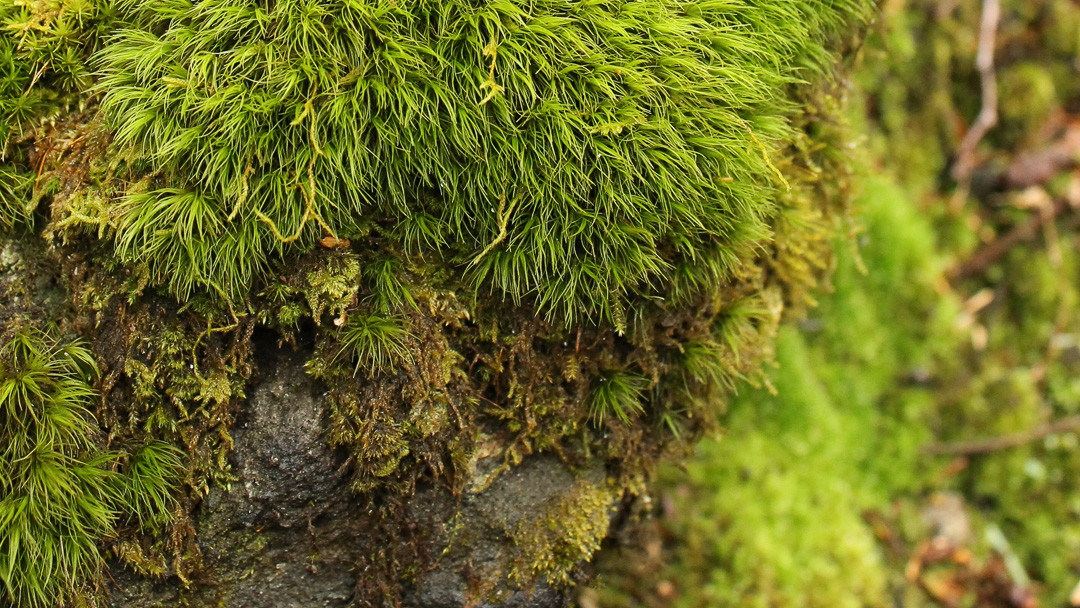
Save the Moss, Save the World
Ok, so I was a fan of Heros when it first came out, and you might think this is an extreme philosophical approach, but let me explain.
Moss belongs to a group of very old plants, called bryophytes, that have been alive since before the Triassic period. They are flowerless, seedless, and primarily receive water and nutrients through their leaves. They are herbaceous (non-woody) without true roots, clinging to a surface with tiny rhizoids. Different varieties grow in a variety of places, usually damp and shady, but many species tolerate sun and seasonal dryness. There are over 12,000 different varieties. It is pretty cool that there are so many different types.
Moss does not require soil, and can grow on many different surfaces. It likes an acidic, nutrient-poor environment. It needs little water and less encouragement to keep growing. I find those very aspiring characteristics for ecological landscape design.
And moss is green. Very green. Green, a color that is associated with a feeling of calm. Green such as what we encourage through the growth of grassy lawns, shrubs, and trees. I bring moss up as an example of a plant that is not highly valued here, but is valued elsewhere. It is a green that is cultivated in traditional Japanese gardens, which millions of people visit with awe each year.
But, due to some strange marketing and cultural shifts in the United States, people here try to eradicate moss. I’m not talking about moss on walkways that gets slippery and hazardous when wet, or roofs where they can damage shingles. I mean moss in gardens and moss in lawns. It is often considered a nuisance, and you can find a great number of articles about how to kill it. Yet it is a green plant that is willing to grow in a place where grass does not want to, and moss does not require fertilizers, huge amounts of water, constant mowing, raking, and blowing – what’s not to like?
So how can embracing something like moss save the world?
- Fertilizers that are scattered on lawns and farms are high in nitrogen and phosphorus that, when washed away in the rain, enters our waterways. This causes eutrophication, or basically the fertilization of water, causing overgrowth of algae and bacteria. Algae uses extra oxygen in the water, making it difficult for many aquatic species to live. Cyanobacteria overgrowth is hazardous to humans, causing anything from minor skin irritations to liver damage and death. Most fertilizers are not safe for pets or children playing in the lawn.
- Moss killers container zinc and copper that are extremely toxic to aquatic lifeforms, pets, and garden plants (including the edible ones) which then become toxic to humans.
- Decreased water use. Some plants just don’t need much, so you can cut down on your water bill and cities can cut back on the amount of water they are sanitizing.
- Moss improves water infiltration and prevents erosion. Since moss doesn’t require soil or rich nutrients, it can be encouraged to grow on stone, gravel areas, or inclines where other plants might find difficult. Using moss as a groundcover will hold soil in in place and allow water to slowly soak into the ground.
Even if moss still isn’t to your liking, question yourself about what other small changes you can make in your current landscape design philosophy. You, too, can help save the world.



Recent Comments